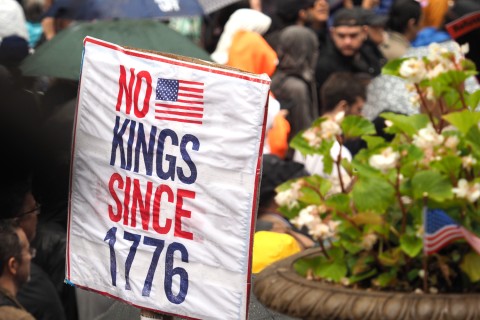Heartbreak City
Fritz Lang was already the most celebrated filmmaker in Germany when he made the silent movie Metropolis in 1927. His previous movies, playful, magically inventive slices of expressionism, had already investigated adventure, mythology, science fiction--all the genres that he calls upon in Metropolis, which in restored form is playing around the country, offering one of the great moviegoing experiences.
Metropolis, which Lang wrote in collaboration with his wife, Thea von Harbou, posits a futurist society that consists of a utopia layered on top of a dystopia. Above the earth, towering toward the sky, is an aristocracy ruled by Joh Fredersen (Alfred Abel), whose son, Freder (Gustav Fröhlich), cavorts with a bevy of girl friends in a garden paradise. (The young women are dressed like Ziegfeld Follies chorus girls suited up for a historical pageant number.)
Below this bejeweled city is the Heart Machine that keeps Metropolis ticking, operated around the clock by unsmiling, robot-like workers who live in a cave-like hell, and whose work lives are agony. Freder doesn't even know of the existence of the workers' city until Maria (Brigitte Helm), a proletarian maiden, appears in the garden one day with a crew of small children, seeking to show them their "brothers" up in the fresh air. His curiosity awakened, Freder explores the workers' city, and compassionately takes a worker's place on the machine's clock face, where all he does in his ten-hour shift is to lift and manipulate the crushingly heavy hands.
Meanwhile, Joh Fredersen has employed a mad inventor, Rotwang (Rudolf Klein-Rogge), to create a robot to control the workers, who have been stirred at clandestine labor meetings by Maria's humanistic speeches. But Rotwang has another agenda. He constructs a leering flapper version of Maria, a vamp with a heart of steel who seduces men by winking one kohl-rimmed eye, and sets her on to tempt the workers to an orgy of destruction.
Lang's vision of the future is an architectural and dramatic wonder. The Heart Machine, accessible by a steep staircase, suggests the influence of the great Babylon set in D. W. Griffith's Intolerance. But, as the critic Pauline Kael pointed out, once Griffith had erected this marvel of design, he couldn't figure out what to do with it except hang his actors off it. Lang knows exactly what to do: he seesaws the workers on either side in a horrifying parody of mechanical labor, and he marches the new shift of laborers up the stairs, silhouetted against the set like a moving blanket, men drained of their humanity by the strain and soullessness of their tasks.
Many expressionist plays written in the early decades of the 20th century--Gas I and II, From Morn to Midnight, R.U.R., The Adding Machine, Machinal and others--took the form of outcries against the mechanization of society, and Metropolis is in the same vein. But Lang had more remarkable showman's instincts than the authors of those plays, and he complicated protest politics with an exciting, densely plotted narrative (as the additional intertitles now make clear) and a Christian iconography. When Freder, scarcely able to plod through his shift, cries out, "Father! Father! Will ten hours never end?," the earthly papa whose mercy he invokes, the autocrat whose policies paralyze the hapless workers in their places, is also a cruel taskmaster god who Freder, crucified on the arms of the clock facade, feels has forsaken him.
The face of compassion in this movie belongs to Maria, a slave-class madonna portrayed with children clinging to her skirts or on a cobbled wooden altar, using the story of the Tower of Babel to educate the workers and bringing a shaft of light to illuminate their subterranean hell. Her reading of the Bible story is that the glorious dream of the tower's inventors crashes because there is no mediator (or heart) between their brains and the hands of the forced labor that builds the tower. When she implores her audience to pray for the arrival of that mediator, she's stoking their faith in the coming of the Messiah. And it's Freder, already established imagistically as a Christ figure, who takes on that role. (In the earlier prints, the Tower of Babel sequence seemed corny and gimmicky; restored to its original grandeur, it's dazzling. And the love scenes between Maria and Freder, their close-ups sculpted by Karl Freund and Günther Rittau's lighting, are like bas-reliefs by Rodin.)
Here's a creepy coda to the Metropolis story. Hitler fell in love with the movie; he tried to hire Lang to make movies for the Nazi party--that is, to be the master propagandist that Leni Riefenstahl became for him. Lang refused and finally got out of Germany (though without his wife, who stayed and worked for the Führer). Returning to Metropolis now, you can see what drew Hitler to it: he saw himself as Freder, the heart that would unite Germany's brains with its hands and lead it to glory. Lang's film career survived Hitler; Riefenstahl's didn't. And Lang's masterpiece, in this radiant new print, transcends its time. It's part of the last great era in German art before the sentimental, retro-high-Romantic kitsch of the Hitler period.





